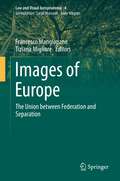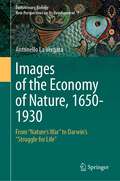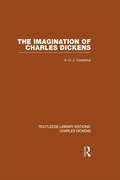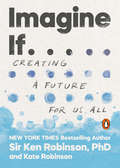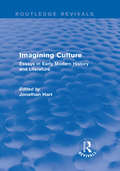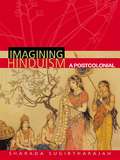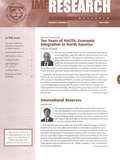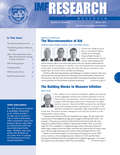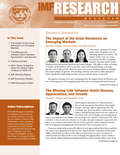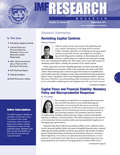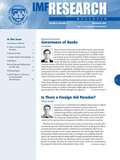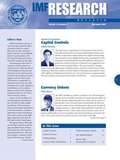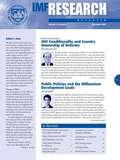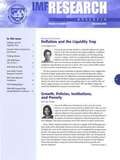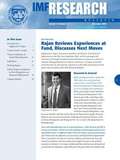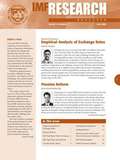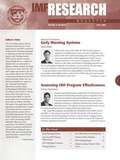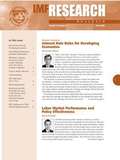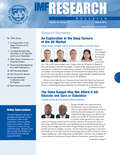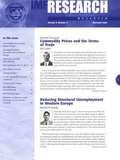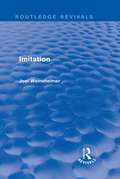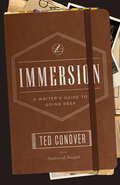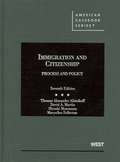- Table View
- List View
Images of Blind and Visually Impaired People in the Movies, 1913-1985: An Annotated Filmography with Notes
by Wendy Erickson Diane WolfeListed in this book are the titles and other information about movies that include characters who are blind or visually impaired.
Images of Europe: The Union between Federation and Separation (Law and Visual Jurisprudence #4)
by Francesco Mangiapane Tiziana MiglioreThis book deals with the fundamental semantics of images of Europe, which consist of valences, mirror beliefs and affectivities. This is why it relaunches the importance of the European discourse in its symbolic dimension. As such, it explores the many images of Europe, or rather the many images through which European discourse is actually constituted in daily life, in search of their enunciative responsibility in today’s world for determining the current “State of the Union”. The identity of the European continent is based on a millenary tension between universalism and particularism: images of Europe have in fact been alternately inspired, over the centuries, by a model of homogeneity – Roman and Carolingian imperial disposition – on the one hand, and by a model of fragmentation – a Europe of city-states, municipalities, regions and small fatherlands – on the other. In the European Union, a political and economic organism, this issue has recently been amplified to the point that it has reentered public debate, and political parties that are only recognizable for being Europeanists or anti-Europeanists are now ubiquitous. In this regard, one major bone of contention is how to portray the quintessential aspects of the European territory, which are either interpreted as “thresholds” to be overcome in the name of a model of United Europe – “integral totality” – or are instead regarded as insurmountable obstacles for a Europe that is irreparably and perhaps, according to anti-Europeanists, fortunately fragmented – “partitive totality”. Further, this is to be done without excluding the possibility of contradictory and complementary solutions to these binary visions. In this context the book analyzes various texts in order to obtain a more precise picture of the clash, reveal its semiotic forms, and by doing so, identify a way out of the crisis.
Images of the Economy of Nature, 1650-1930: From "Nature’s War" to Darwin’s "Struggle for Life" (Evolutionary Biology – New Perspectives on Its Development #7)
by Antonello La VergataThe book discusses ideas concerning the order and balance of nature (or "economy of nature") from the late 17th century to the early 20th century. The perspective taken is broad, longue durée and interdisciplinary, and reveals the interplay of scientific, philosophical, moral and social ideas. The story begins with natural theology (dating roughly to the onset of the so-called Newtonian Revolution) and ends with the First World War. The cut-off date has been chosen for the following reasons: the war changed the state of things, affecting man’s way of looking at, and relating to, nature both directly and indirectly; indeed, it put an end to most applications of Darwinism to society and history, including interpretations of war as a form of the struggle for existence. The author presents an overview of the different images of nature that were involved in these debates, especially in the late 19th century, when a large part of the scientific community paid lip service to ‘Darwinism’, while practically each expert felt free to interpret it in his own distinct way. The book also touches on the so-called ‘social Darwinism’, which was neither a real theory, nor a common body of ideas, and its various views of society and nature’s economy. Part of this book deals with the persistence of moralizing images of nature in the work of many authors. One of the main features of the book is its wealth of (detailed) quotations. In this way the author gives the reader the opportunity to see the original statements on which the author bases his discussion. The author privileges the analysis of different positions over a historiography offering a merely linear narrative based on general implications of ideas and theories. To revisit the concept of the so-called "Darwinian Revolution", we need to examine the various perspectives of scientists and others, their language and, so to speak, the lenses they used when reading "facts" and theories. The book ends with some general reflections on Darwin and Darwinisms (the plural is important) as a case study on the relationship between intellectual history, the history of science and contextual history.Written by a historian, this book really gives new, multidisciplinary perspectives on the "Darwinian Revolution."
The Imagination of Charles Dickens: Routledge Library Editions: Charles Dickens Volume 3 (Routledge Library Editions: Charles Dickens)
by A. O. CockshutThis book describes Charles Dickens as an ordinary man who by being perfectly tuned to the public taste developed into a master of his art. The clue to this paradox lies, in the author’s opinion, in Dickens’ obsession with such topics as money, crowds and prisons which touch the life of everyone. From the deep fears of his childhood they became the main food for his imagination. As his creative mind worried over them, so his art developed. This process provided the driving force behind his work, and is at the root of his greatness as an artist.
Imagine If . . .: Creating a Future for Us All
by Sir Ken Robinson Kate RobinsonA call to action that pulls together all of Sir Ken Robinson&’s key messages and philosophies, and that challenges and empowers readers to re-imagine our world, and our systems, for the better.Sir Ken Robinson changed the lives of millions of people. The embodiment of the prestigious TED conference, his TED Talks are watched an average of 17,000 times a day--a figure that Chris Anderson, Head of TED, says is the equivalent of selling out the Millennium Dome every night for fifteen consecutive years. A New York Times bestselling author, Sir Ken&’s books have been translated into twenty four languages. In his final years, Sir Ken was working on a book that would serve as his manifesto. This book was being written for both new and dedicated audiences alike as a coherent overview of the arguments that he dedicated his life to, and as a pivotal piece of literature for the education revolution he began. When Sir Ken received his cancer prognosis in August 2020 he asked his daughter and collaborator, Kate Robinson, to finish writing this manifesto and continue his work. At its core, Sir Ken&’s work is a love letter to human potential--a celebration of what we as a species are capable of doing, and of being, if we create the right conditions. It is a rallying cry to revolutionize our systems of education, and the ways in which we run our businesses and structure our social systems, so that they bring out the best in each and every person. Sir Ken often observed that what separates us from the rest of life on Earth is our power of imagination: the ability to bring to mind things that are not present to our senses. It is imagination that allows us to create the world in which we live, rather than just exist in it. It also gives us the power to recreate it.
Imagining Culture: Essays in Early Modern History and Literature (Routledge Revivals #1)
by Jonathan HartImagining Culture, first published in 1996, discusses literature as a whole rather than a partisan interest in those who are in or out of favour, and how that literature relates to other arts as well as to philosophical, historical, and cultural contexts. This title will be of interest to students of literature and cultural studies.
Imagining Hinduism: A Postcolonial Perspective
by Sharada SugirtharajahImagining Hinduism examines how Hinduism has been defined, interpreted and manufactured through Western categorizations, from the foreign interventions of eighteenth and nineteenth-century Orientalists and missionaries, to the present day. Sugirtharajah argues that ever since early Orientalists 'discovered' the ancient Sanskrit texts and the Hindu 'golden age', the West has nurtured a complex and ambivalent fascination with Hinduism, ranging from romantic admiration to ridicule. At the same time, Hindu discourse has drawn upon Orientalist representations in order to redefine Hindu identity.As the first comprehensive work to bring postcolonial critique to the study of Hinduism, this is essential reading for those seeking a full understanding of Hinduism.
IMF Research Bulletin
by Roberto Cardarelli Jaewoo LeeA report from the International Monetary Fund.
Imitation (Routledge Revivals)
by Joel WeinsheimerIn this book, first published in 1984, Joel Weinsheimer advocates revitalizing the practice of imitating literature as a mode appropriate for literary critics as well as artists. The book is not only about imitation; it is itself an imitation, specifically of Samuel Johnson. As both the focus and mode of presentation, imitation is presented not merely as a kind of poetry that once flourished in the eighteenth century but also as a kind of criticism particularly relevant today. Applying arguments from philosophy of science, deconstruction, psycho-analysis, literary theory, semiotics and hermeneutics, Weinsheimer shows that the three main currents of thought responsible for forcing imitation underground were empiricism, originalism and historicism. The three central chapters of the book concentrate on their representatives: John Locke, Edward Young and Thomas Warton. The author then applies Johnsonian arguments – supported by those of Gadamer Peirce – to challenge those objections and re-establish imitation as an intellectually defensible mode of writing.
Immersion: A Writer's Guide to Going Deep (Chicago Guides to Writing, Editing, and Publishing)
by Ted ConoverOver three and a half decades, Ted Conover has ridden the rails with hoboes, crossed the border with Mexican immigrants, guarded prisoners in Sing Sing, and inspected meat for the USDA. His books and articles chronicling these experiences, including the award-winning Newjack: Guarding Sing Sing, have made him one of the premier practitioners of immersion reporting. In immersion reporting--a literary cousin to ethnography, travel writing, and memoir--the writer fully steps into a new world or culture, participating in its trials, rites, and rituals as a member of the group. The end results of these firsthand experiences are familiar to us from bestsellers such as Nickel and Dimed and Behind the Beautiful Forevers. But in a world of wary strangers, where does one begin? Conover distills decades of knowledge into an accessible resource aimed at writers of all levels. He covers how to "get into" a community, how to conduct oneself once inside, and how to shape and structure the stories that emerge. Conover is also forthright about the ethics and consequences of immersion reporting, preparing writers for the surprises that often surface when their piece becomes public. Throughout, Conover shares anecdotes from his own experiences as well as from other well-known writers in this genre, including Alex Kotlowitz, Anne Fadiman, and Sebastian Junger. It's a deep-in-the-trenches book that all aspiring immersion writers should have in hand as they take that first leap into another world.
Immigration and Citizenship: Process and Policy (7th Edition)
by T. Alexander Aleinikoff David A. Martin Hiroshi Motomura Maryellen FullertonThe seventh edition of this pioneering casebook continues its tradition of comprehensive coverage, with problems and exercises that allow students to hone skills as counselors, as litigators, and as policy advisors. At the same time, the casebook situates immigration and citizenship law within broader contexts of constitutional and administrative law as well as current political debates. This new edition is reorganized for more efficient coverage, with an introductory chapter on immigration history; treatment of unauthorized migration alongside lawful admissions; consolidated treatment of inadmissibility and deportability; reworked materials on state and local enforcement; and thorough redesign of materials on criminal convictions.
Immigration Law and Defense National Lawyers Guide: Volume 2
by Philip HornikThis publication was created to provide you with accurate and authoritative information concerning the subject matter covered; however, this publication was not necessarily prepared by persons licensed to practice law in a particular jurisdiction. The publisher is not engaged in rendering legal or other professional advice and this publication is not a substitute for the advice of an attorney. If you require legal or other expert advice, you should seek the services of a competent attorney or other professional.

